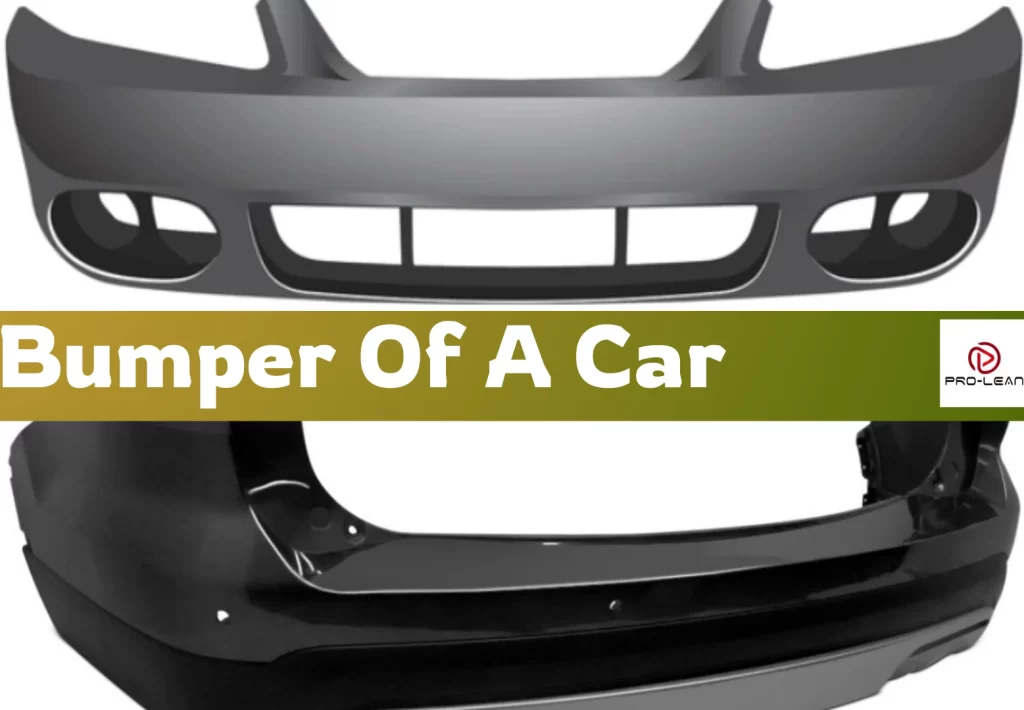
Bumper of a car
A car comprises many components, some large and others small, some complex, and others simple. Indeed, estimates show that there are close to 2,000 components in the standard car. The bumper of a car is one of those components you can easily overlook, yet it is extremely important and contains several interesting parts.
The aesthetic value of the bumper is beyond argument, with manufacturers competing for the best styles that complement the overall appearance of the car. But beyond the looks, this component has serious functional contributions.
As you consider where to get the best car bumper CNC Machining Services, the car bumper functions to remember include impact protection in case of accident, protection of components underneath, support for car technological touch, and overall car dynamics.
There is so much happening on and beneath the car bumper that we found it worthy to prepare an article on this component. Join us as we unpack the design, functions, and manufacturing methods of this critical car component.
What Is A Car Bumper?
The car bumper is an external feature of a car primarily designed to absorb frontal and rear accidental impacts and protect the engine and surrounding components for the front. The engine is surrounded by the headlight, battery, radiator, sensors, and many other components, all of which stay under the cover of the car bumper.
The rear bumper of a car typically protects the fuel tank, rear lights, and exhaust system, among others.
A component so important must meet requirements for sturdiness, sleekness, hardness, weight, and so on. It is therefore understandable why materials such as Polypropylene (PP) and Polycarbonate (PC) are commonly used in manufacturing car bumpers.
Of course, the specific styling and materials differ based on the vehicle’s or car’s application. Offroad vehicles needed very tough bumpers, so steel and aluminum are used on such.
This takes us to the specific different functions of the bumper of a car.
The Different Functions Of A Car Bumper
There are many functions, and thereby reasons, one should use the best bumper materials and safeguard the component. Sourcing parts for a car bumper from a reputable provider can ensure the following functions are optimized:
Car Protection During Light Accidents
The bumper is often the first part of the car to get hit during an accident. It receiving the first impact means it is a crucial point of protecting the rest of the car. Indeed, manufacturers make the bumper with this in mind.
For instance, the component is designed to absorb impact energy, a function that helps keep the car intact in minor accidents. Without it, even the smallest of impacts could cause serious harm to the car and its occupants.
Protect Vital Car Components
A fundamental function of the bumper assembly front is to protect various vital components of the car in minor accidents. Impact damage can easily damage the battery, electricals, engine, and transmission system.
The vital parts behind the bumper can be extremely costly to repair, but users can avoid these inconveniences with a quality bumper of a car. As the first line of defence, the bumper helps maintain the structural integrity and functionality of vital parts.
For more about the car engine and transmission system, read also: Cylinder Head Machining: Basics and Methods for Ideal Engine Performance and https://proleantech.com/transmission-shaft-principle/ respectively.
For Aesthetics Of The Car
To supplement the protective element, the bumper is also part of the overall car aesthetics. The best bumper of a car blends well with the other exterior components of the car. This is increasingly important for car brands now that competition is extremely high.
Users are looking at all factors when making purchasing decisions, including the car’s outward and interior appearance.
Related to car interior appearance, read also: https://proleantech.com/interior-parts-of-a-car/.
Houses Crucial Accessories
With the significant technological advances for enhanced user safety and experience, the bumper of a car is used for many accessories. The most notable ones are sensors for parking, braking, lane control, and so on.
It not only holds these accessories, but also protects them from damage. The variety of accessories found in car bumpers today is large. Apart from sensors, you will find fog lights, cameras, headlamp washers, and many others on this component.
The Parts Of A Car Bumper
From the discussion so far, it is evident that the bumper is a core part of the car’s design. Each of its components – the cover, reinforcement structure, energy absorber, and others – should therefore be desgned and manufactured with top-most quality.
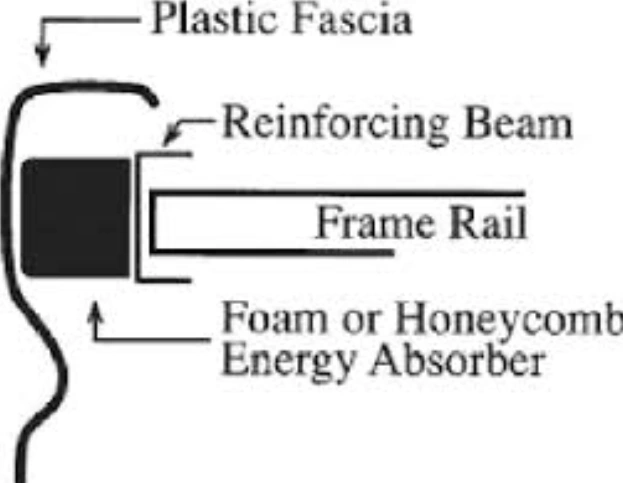
Basic parts of a car bumper
ProleanTech delivers that quality, and vast clientele in China and overseas can attest to that. Let us look at the parts of a car bumper in detail, as we urge you to get in contact with our experts team for details.
The Bumper Cover
Is there a difference between bumper and bumper cover? Yes, the bumper cover is the visible part of the bumper. Apart from being attractive, this part also protects the other parts of the bumper.
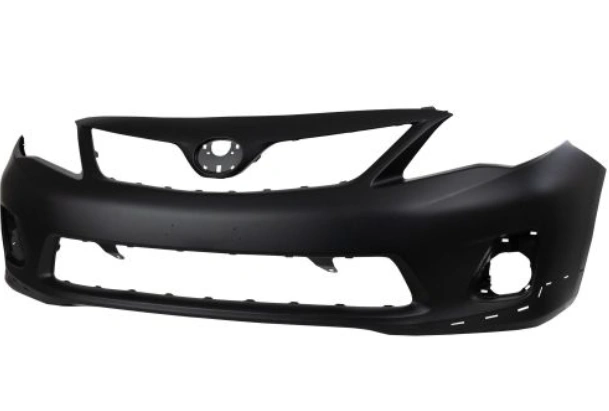
Bumper cover
The Mounting Brackets
These are special metal brackets that connect the bumper structure to the car’s frame. They ensure structural integrity of the bumper by properly aligning and mounting the component.
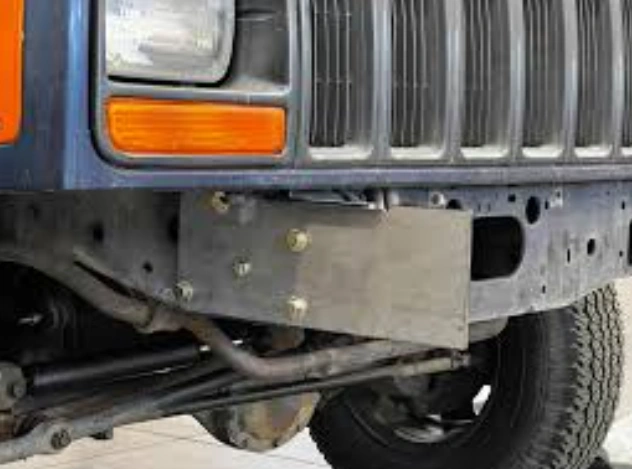
Car bumper mounting brackets
The Energy-absorbing Section
The shock absorber of the car bumper is designed to absorb impact energy when the car gets into an accident. It prevents damage to vital parts of the car and the car occupants.
The Reinforcement Bar/beam
This part is beneath the bumper cover, acting as supplemental support to the cover. Its main function is to prevent or minimize deformation of the bumper in impacts.
Try Prolean Now!
Materials Used To Design A Car Bumper
What are bumpers made of? While modern bumpers of a car are made from lighter materials such as thermoplastic, some manufacturers, with reasons, opt to use aluminum and other metals.
Every potential auto bumper material has its strengths and weaknesses. With ProleanTech-your custom parts manufacturing partner– by your side, those attributes come out clearly and you are able to make an informed decision for this auto part.
The common bumper materials in detail are as covered next:
Aluminum
Aluminum as a bumper material is mainly due to its corrosion resistance and lightweight properties. The material is also strong, an attribute that augurs well with the protection requirements of the car.
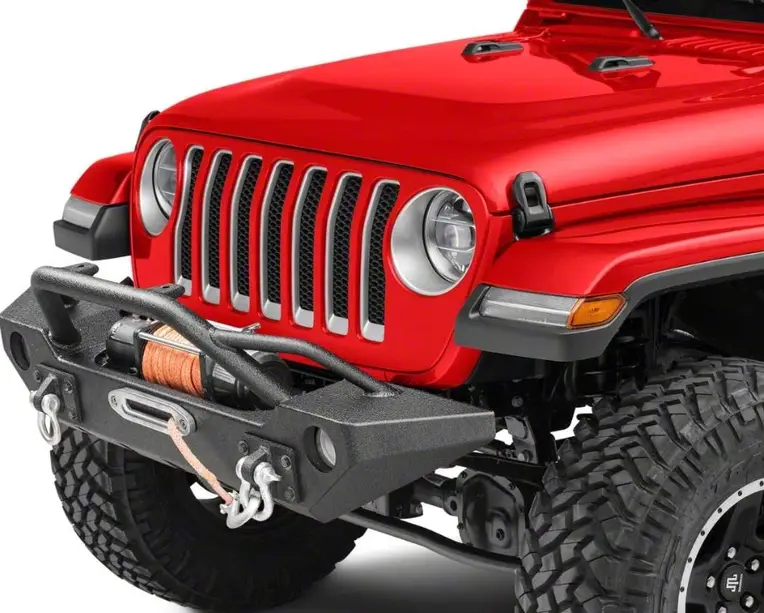
Aluminum front bumper
The material may require annealing or other heat treatment procedures to meet the requirements of a car bumper and related parts.
Read more about annealing: https://proleantech.com/top-annealing-methods/.
Polycarbonate (PC)
Polycarbonate is one of the most popular polymers for the bumper of a car. These auto bumper materials are generally preferable because they are not only lightweight and strong, but also capable of regaining shape after an impact.
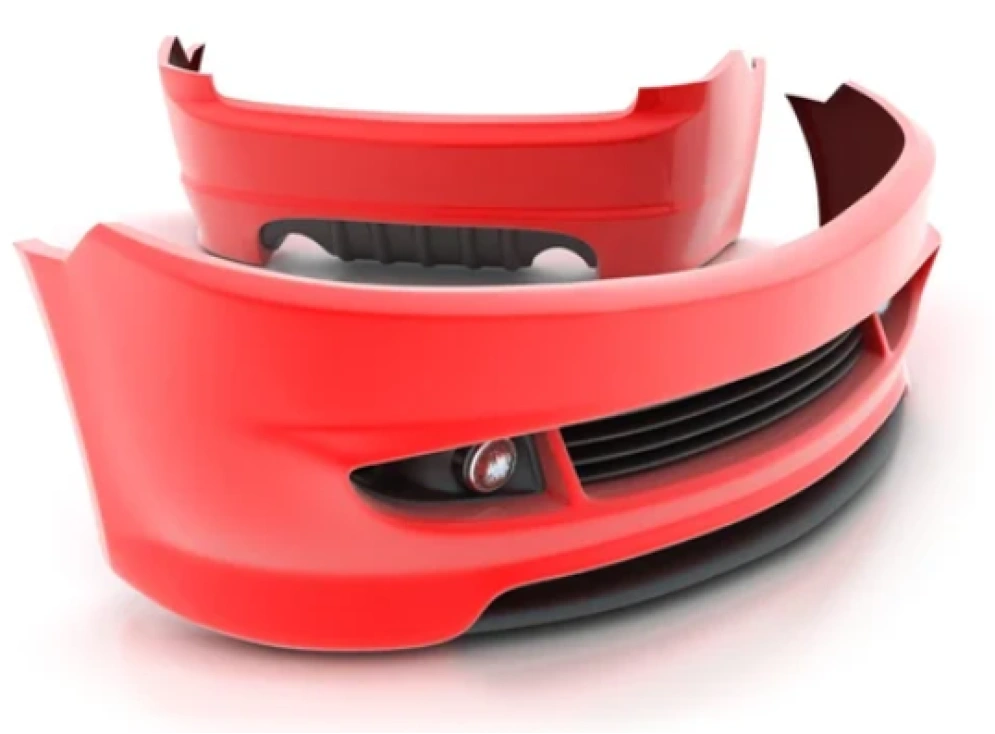
A polycarbonate bumper of a car
Acrylonitrile Butadiene Styrene (ABS)
Like polycarbonate, ABS is strong and impact resistant. But it has another unique and relevant property – the capability to remain brittle-free even at low temperatures. As you can already guess, this resonates with users in colder climates. This material is also extremely easy to manufacture.
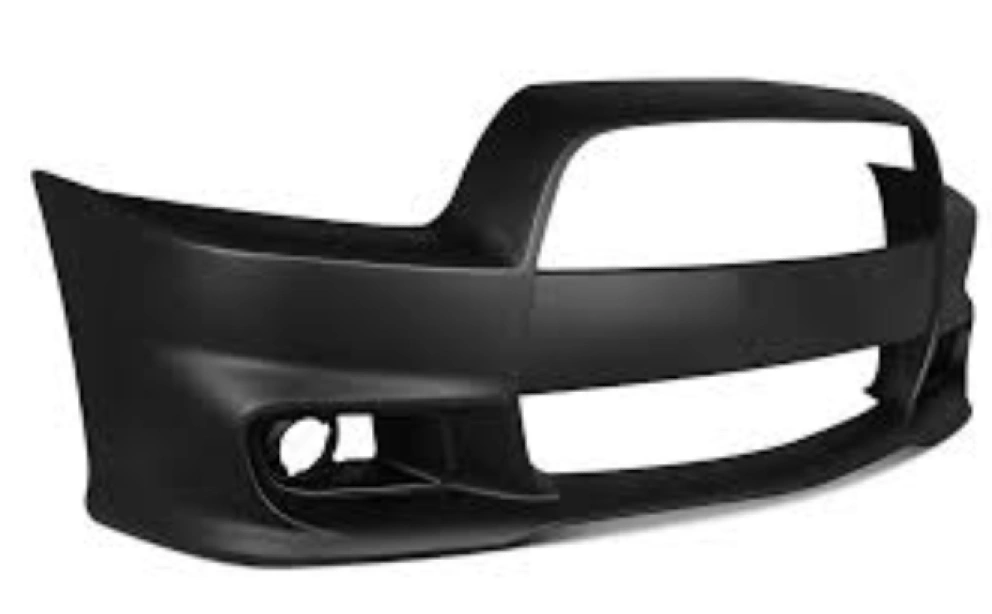
An ABS car bumper
Polyamide (Nylon)
For car bumper dealers looking for a blend of thermal stability and mechanical strength, there’s probably no better material than polyamide. Its capability to work under elevated loads and stresses is unmatched. Therefore, nylon features prominently in vehicles used in tough conditions.
Generally, the auto bumper materials used today all spell modernity and a trend towards fuel efficiency, sustainability, and cost-efficiency.
Read also: Guide To Metal Auto Parts & Ongoing Trends.
Different Types Of Car Bumpers
While the primary functions of the car bumper are as already discussed, the specific design and features on the component can differ widely. Some have special features for towing and so on.
Such variations give rise to bumper options such as standard bumpers, tube bumper, cowboy bumper, and roll pan bumper, among others.
Below are more details about the different types of car bumpers.
Standard Bumpers
These ones are called “standard” because you will find them on most cars. Yes, these bumpers are made of plastic and provide basic protection to the car and its occupants. Their affordability and replacement ease are the main selling points.
Tube Bumpers
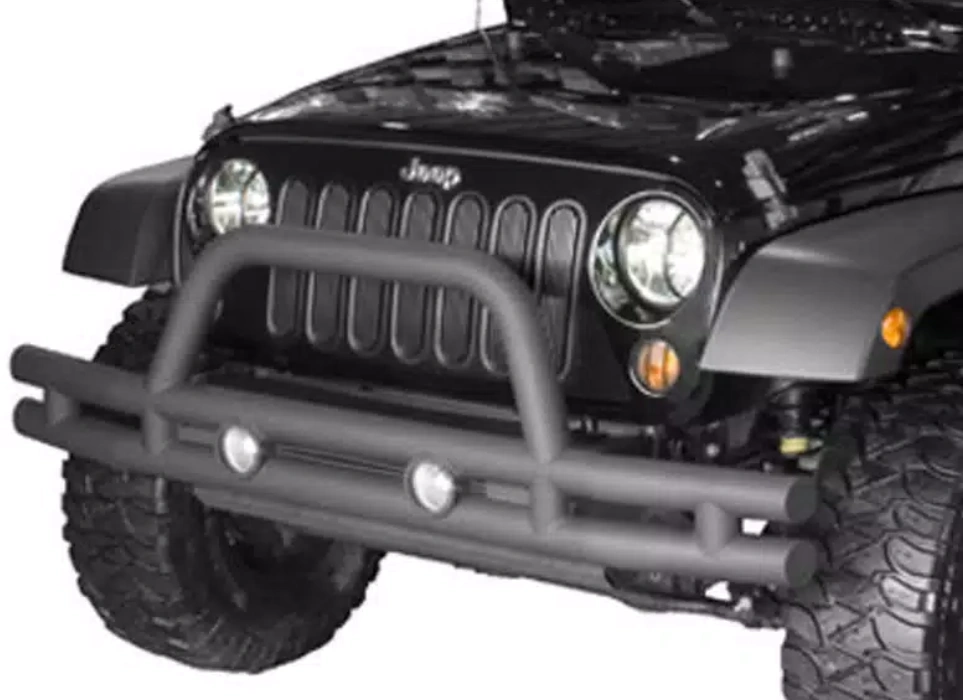
Tube car bumper
Tube bumpers have a unique design characterized by extension to the top of the lights. They are synonymous with trucks, and add a stylish touch that many users seem to value.
Cowboy Bumpers
Also called deep drop bumpers, these types are notably taller than the other types. This design provides extra protection and allows for bigger loads.
Roll Pan Bumpers
For users looking to conceal the bumper and perfectly blend it with the rest of the car’s outline, these are the bumpers. They rarely have space for accessories.
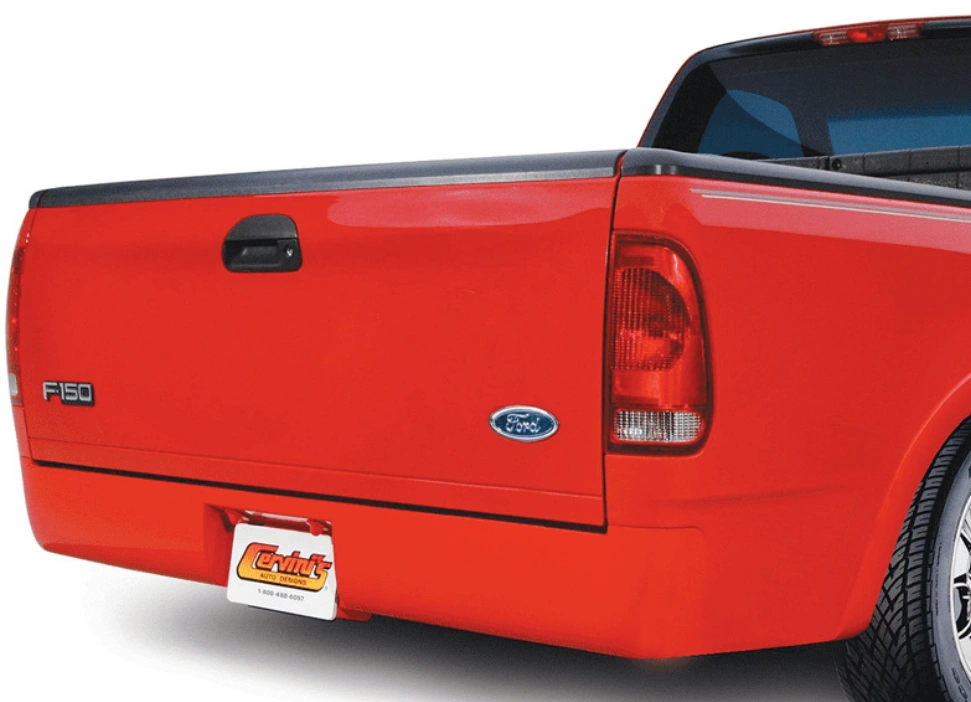
A roll pan rear bumper of a car
Step Bumpers
With their protruding or stepped middle section, these bumpers are very recognizable. They are mostly associated with SUVs and trucks. The step helps users access the vehicle’s bed.

A step bumper of a car
Try Prolean Now!
Custom Manufacture Of Car Bumper With ProleanTech Solutions
Whether for replacement or repair, bumper parts from a professional manufacturer are worth the investment. ProleanTech utilizes advanced manufacturing methods fit for bumpers. Classic and latest cars are all covered under manufacturing services for custom car bumpers.
Consider the following common manufacturing processes for these parts:
CNC Manufacturing
CNC manufacturinghas revolutionalized how automotive parts are manufactured, including bumpers. Mold-making for these components is excellent with CNC machining services. The technology ensures production of highly accurate molds of aluminum, steel, and other metals.
CNC manufacturing is a popular manufacturing method where sheet metal fabrication for the bumper of a car is required. For instance, it applies for sheet metal bending and sheet metal cutting.
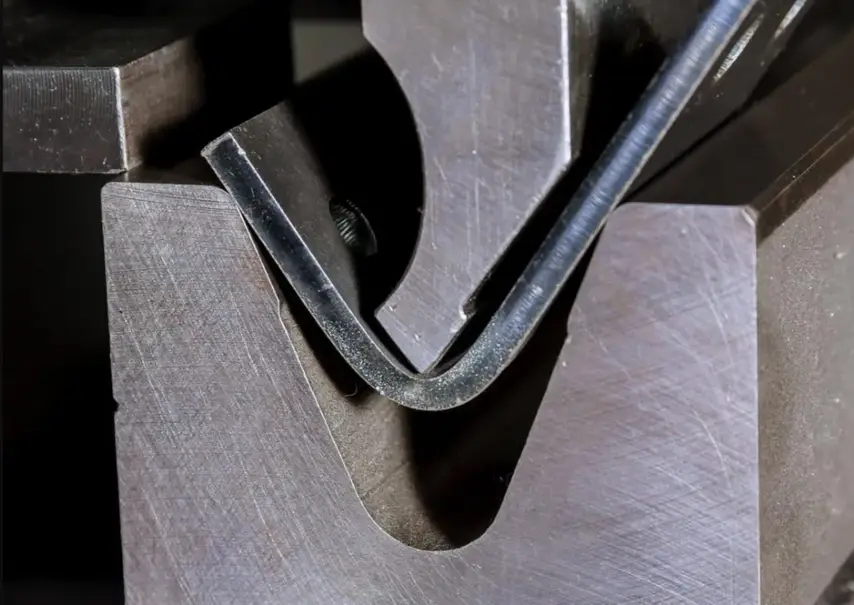
Sheet metal bending
CNC machining for prototypes is crucial before mass manufacturing of bumpers of a car. Users looking for custom bumpers may also consider CNC machining. You can learn all about CNC machining to discover how more relevant it is to bumper manufacturing.
3D Printing
If you are looking for custom bumpers or prototypes, 3D printing is another exciting manufacturing option. The development stage of a new bumper is faster and cost-effective with 3D printing.
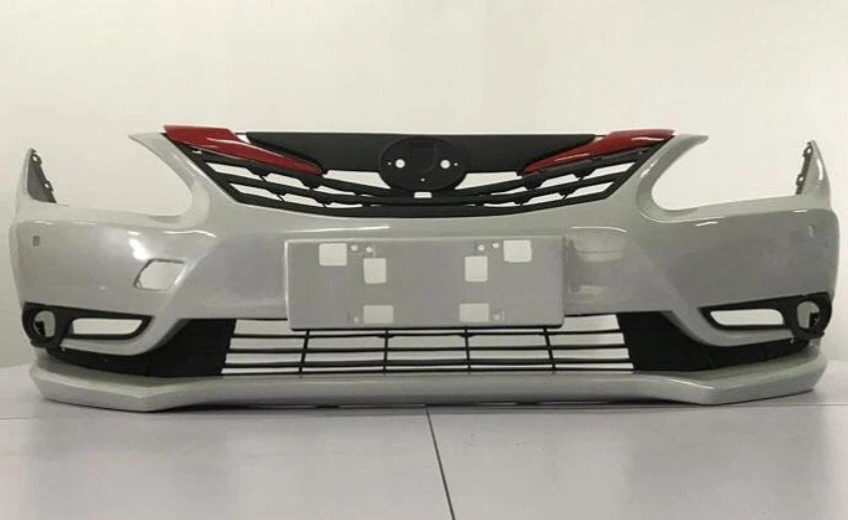
A 3D printed car bumper
It is an effective technology for aftermarket suppliers looking for unique car bumper parts. Such parts are either too expensive or time-consuming to produce with other methods.
Injection Molding
Injection molding is a primary production method for new car bumpers. The process entails heating plastic to molten form and injecting it into a mold. The mold has the shape of the envisaged bumper.
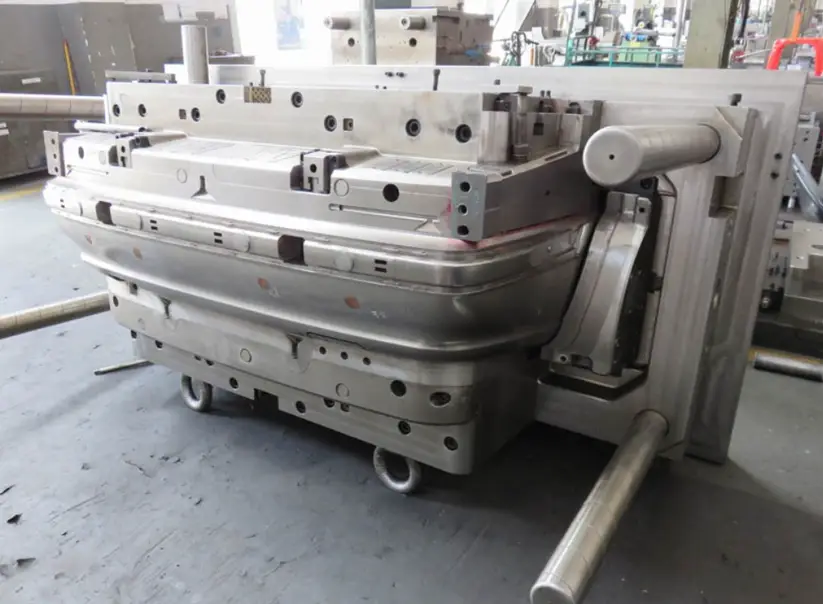
A car bumper mold
Upon cooling, the bumper is fit for use. This method is efficient and suitable for mass production, hence its popularity in modern manufacturing of these parts.
Read also: How Motor Shafts Are Made and Why They Matter.
Car Bumper Repair And Replacement: Cost And Other Considerations
By the mere fact of their location, car bumpers are prone to dents, scratches, and other damages. Repair and replacement services are therefore very popular.
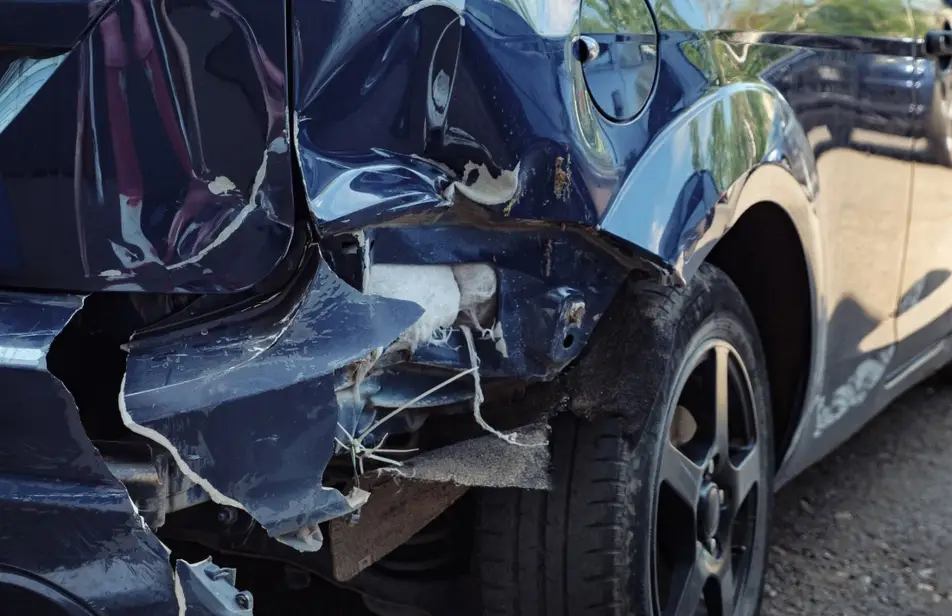
A damaged car bumper
Car bumper repair may appear simple, but it entails many processes, materials, and technologies. The specific set used depends on many factors, from damage extent to bumper material.
Let’s first list the common car bumper damages:
- Scratches
- Cracks
- Dents
Each of these has a remedy, but the fundamental approach is always the same. The service provider first assesses the condition of the bumper. For proper repair, the bumper is often detached from the vehicle.
Popular repair techniques applied are heat reshaping, plastic welding, hammering, and refilling. These will be finalized with finishing touches, which are painting, sealing, and reattachment to the vehicle.
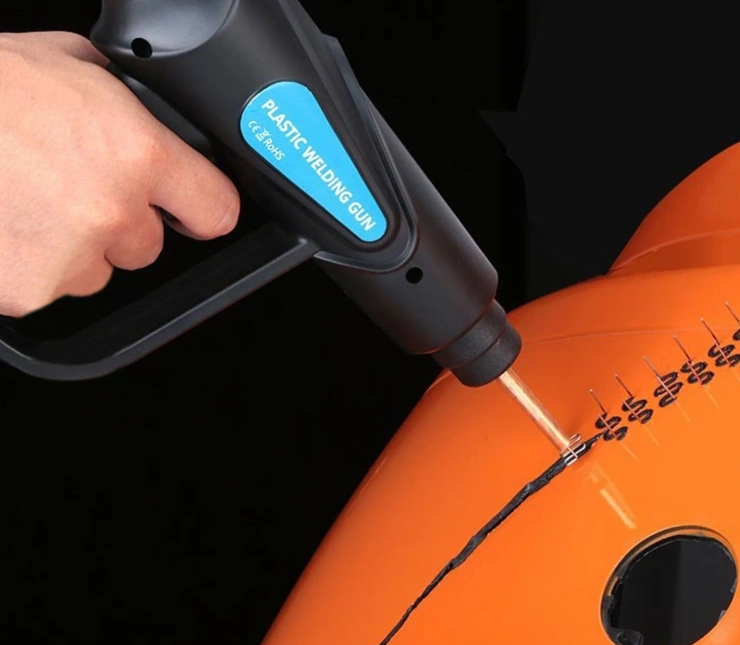
Plastic welding a car bumper\
When is bumper replacement necessary? The decision on whether to discard the old and use a new bumper of a car is usually a decision made between the user and the service provider. Factors that come into play are:
- The extent of the bumper damage
- Bumper type
- Car type
- Repair cost vis-à-vis the replacement cost
In Conclusion
The bumper of a car is a crucial component that safeguards the car, the user, and pedestrians. With this knowledge on its composition, function, and manufacturing processes, it is easier to choose the best solutions provider.
Using high quality parts means better protection and enhanced durability for the car. You can partner with ProleanTech for CNC machining services related to the car bumper for improved business.
So, ask for expertly produced bumper parts today and get a Fast & Free Quote!
FAQs
What is the best material for a bumper?
Polypropylene is considered the best material for a bumper because it has the best balance of cost-effectiveness, lightweight, and impact resistance.
What type of plastic is my bumper?
As indicated above, the plastic for your bumper is most likely polypropylene. However, some car models come with ABS (Acrylonitrile Butadiene Styrene) bumpers.
What element makes car bumpers?
Car bumpers typically contain polymer-based materials, but they also have steel or other metal reinforcement.
Are car bumpers plastic or fiberglass?
Car bumpers are normally plastic, not fiberglass.
What is the best plastic for car bumpers?
The best plastic for car bumpers is polypropylene (PP).
How much does it cost to replace a bumper?
Bumper replacement cost depends on the car model, whether the bumper is rear or frontal, and the prevailing labor costs.
When do you need to repair or replace the car bumper?
You need to repair or replace the car bumper if it has irredeemably lost its aesthetic and functional value.
What factors influence the choice of custom car bumper materials?
The choice of car bumper material is based on aesthetics, impact resistance, cost of material, durability, and strength, among other factors.
Can you customize a car bumper aftermarket?
Yes, you can customize a car bumper aftermarket through alterations of materials, color, and design.

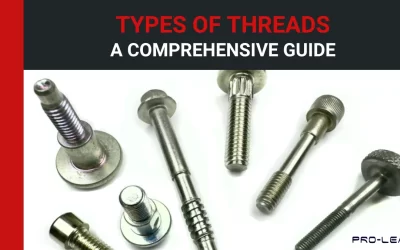
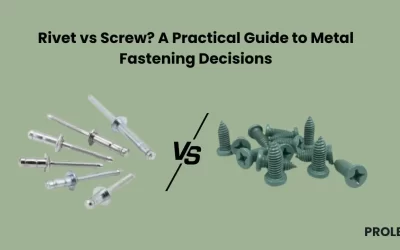
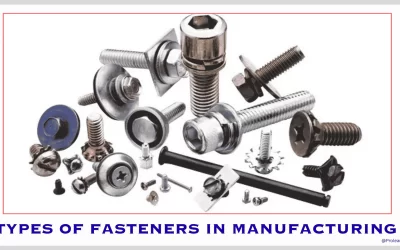
0 Comments